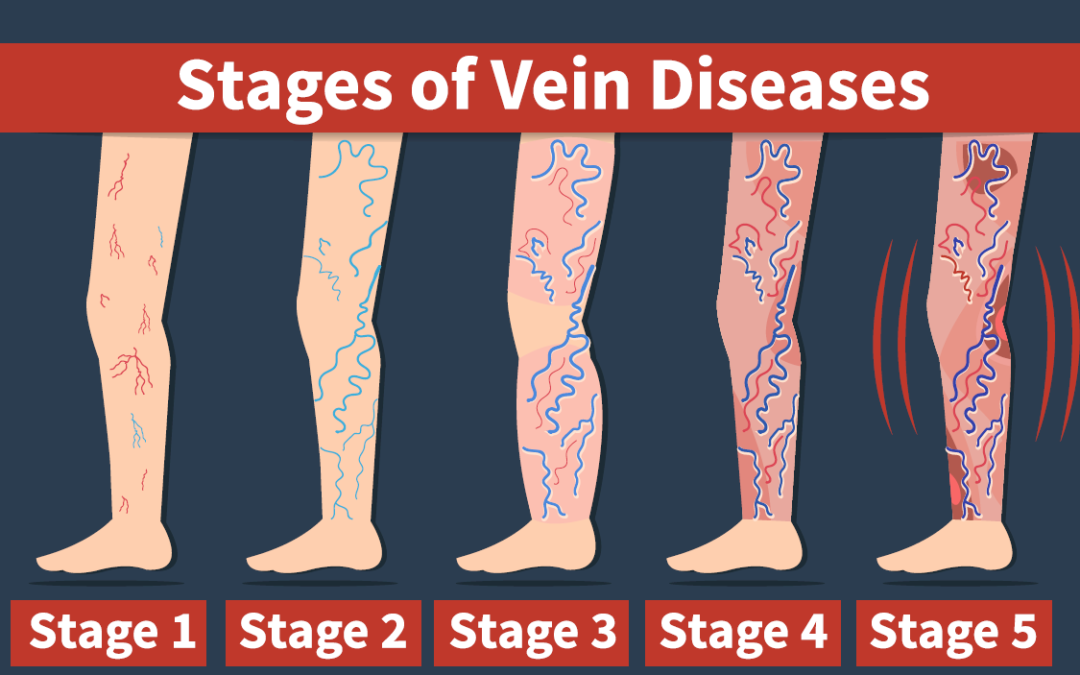The health of your veins is an important component in your health overall.
So how do you keep that intricate network of blood flow going strong? There are a number of factors that can impact the well-being of your veins. Some you can control, such as lifestyle choices and others, like gender and genetics, you can’t. Check out the many issues affecting your vein health today.
The Facts about Vein Disease
As many as half of all adults over the age of 50 in the U.S. may have some form of vein disease. These conditions can include visible varicose veins, although some disorders develop without any noticeable symptoms. When symptoms do occur, such as pain, aching and swelling of the lower leg in addition to the formation of varicose veins, the condition can become debilitating enough to affect your quality of life.
Vein disorders tend to be progressive and chronic, which means if they are left untreated, they can worsen over time. Treatments tend to work best when the disorder is diagnosed early on. If you have risk factors for vein disease, it is best to have a comprehensive vein assessment even before symptoms develop when possible, to prevent potential complications.
Risk Factors Out of Your Control
Some risk factors are beyond your control:
Family History: If one or both of your parents have vein disease, you are more likely to develop the condition as well. In fact, your risk may go up as high as 90 percent if both your parents have a disorder. Knowing family history is an important consideration in moving forward with a vein assessment.
Gender: Women are much more likely to sport a few varicose veins than men. However, that does not mean men are immune from vein disorders. In fact, men are more likely to see serious complications occur because they are less likely to seek treatment for their condition.
Age: The older you are, the more likely you are to develop a vein disorder. This is primarily because aging veins are more apt to become damaged or wear out, which affects blood circulation and leads to a vein condition known as venous insufficiency. Venous insufficiency is often the underlying cause of those bulging varicose veins that appear on your lower leg.
Other Risk Factors
There are other risk factors for vein disease that you can control, taking steps toward preventing these conditions. Those factors include:
Weight: When you gain weight, you add stress to those hard-working lower leg veins. Maintaining a healthy weight usually involves a balanced diet and regular exercise, which are also imperative for warding off vein disorders.
Sitting and Standing: If your occupation requires long hours of sitting or standing, you could be doing a disservice to your veins. These activities can increase stress on the lower leg veins, increasing the odds they could become damaged over time. If you must stand or sit for long periods, be sure to take hourly breaks to allow your veins that rest as well.
Getting the Right Diagnosis and Treatment
Whether you are seeing symptoms of a possible vein disorder or simply worried you may be at risk for one, a thorough vein assessment can determine whether a condition is present and treatment is needed. At Vein Specialists of the Carolinas, we offer the latest in diagnostic tools to pinpoint your condition and make appropriate treatment recommendations. We also provide different treatment options to ensure we can tailor your procedure to your specific needs.
Vein disorders are not something that should be taken lightly, particularly if you are at risk for developing these conditions. Contact Vein Specialists of the Carolinas at 704-861-2072 or 704-544-5245 to schedule your vein assessment today.
“All We Do Is Veins, All Day Every Day.”

